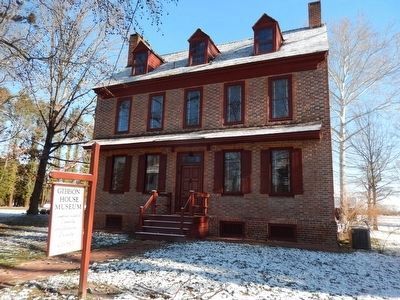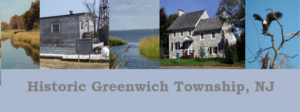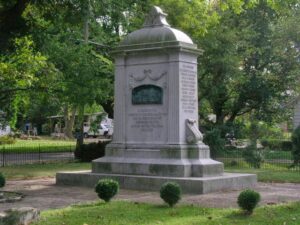Nicholas Gibbon House
 In 1730, Nicholas Gibbon, who had inherited more than 3,000 acres of land nearby, bought a 16 acre lot in Greenwich on which he built a replica of a London townhouse he had admired. The brick, fired on the property, was laid in the Flemish Bond pattern: the design is achieved by using a red stretcher and blue header producing a definite and attractive pattern. Rubbed brick is a further architectural feature, outlining each door and window opening as well as being used to emphasize the four corners of the house.
In 1730, Nicholas Gibbon, who had inherited more than 3,000 acres of land nearby, bought a 16 acre lot in Greenwich on which he built a replica of a London townhouse he had admired. The brick, fired on the property, was laid in the Flemish Bond pattern: the design is achieved by using a red stretcher and blue header producing a definite and attractive pattern. Rubbed brick is a further architectural feature, outlining each door and window opening as well as being used to emphasize the four corners of the house.
The mansion, appropriately furnished with the products of 18th and 19th century artisans, contains a reception hall, a paneled drawing room, a formal dining room, and a kitchen dominated by a huge walk-in fireplace in which demonstrations of colonial open-fire cooking are conducted. There is a small store in the “New Kitchen” where postcards, gifts, and a fine collection of books and pamphlets on the history of the area may be purchased.
On the second floor, in a addition to a bedroom, are exhibits of locally made, rush seated, “Ware” chairs, children’s toys, 19th century clothing, and a craft room with spinning and weaving implements and other crafts, as well as Civil War artifacts donated by local families.
A Barn Museum offers a display of implements used in gardening and agriculture are tools used by 19th century carpenters, wheelwrights, and blacksmiths, along with a number of artifacts essential to the homemaker of the 1800’s.


